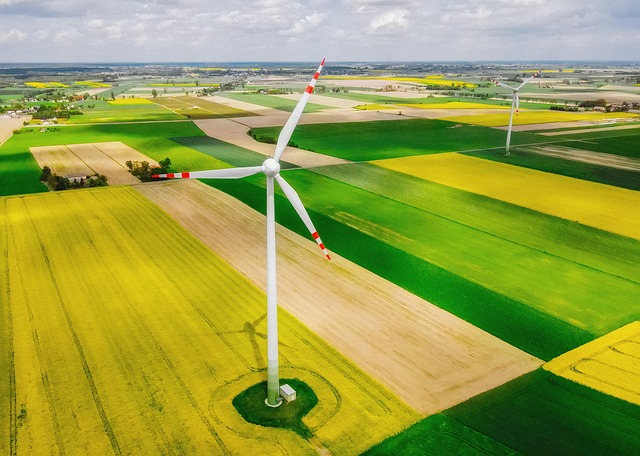
Beyond Fossil Fuels: The Rise of Clean Energy Solutions
The global energy landscape is undergoing a profound transformation. With the increasing urgency to combat climate change and reduce dependence on fossil fuels, clean energy solutions are emerging as pivotal components in the transition toward sustainable development. Clean energy encompasses a broad range of technologies and resources that provide energy with minimal environmental impact, ensuring a healthier planet for future generations. This article explores the dynamics of clean energy, the technologies driving this transition, the economic implications, and the challenges and opportunities that lie ahead.
Understanding Clean Energy
Clean energy refers to energy generated from renewable sources that produce little to no greenhouse gas emissions. The primary renewable sources include solar, wind, hydroelectric power, geothermal, and biomass. These energy forms stand in stark contrast to fossil fuels—coal, oil, and natural gas—which are significant contributors to climate change and are finite resources.
The Impetus for Change
The urgency to transition from fossil fuels to clean energy is underscored by several critical factors:
- Climate Change: The overwhelming scientific consensus indicates that human activities, particularly the burning of fossil fuels, are a primary driver of climate change. Clean energy solutions can mitigate these effects by significantly lowering carbon emissions.
- Resource Depletion: Fossil fuels are non-renewable; once depleted, they cannot be replenished. In contrast, renewable energy sources are abundant and can provide a sustainable energy supply for centuries.
- Energy Security: Diversifying energy sources reduces dependence on imported fuels, bolstering national energy security. Clean energy can be produced locally, promoting energy independence.
- Economic Growth: The clean energy sector has become a major driver of job creation and economic growth, often outpacing fossil fuel industries in employment opportunities.
Key Clean Energy Technologies
The clean energy revolution is fueled by several innovative technologies. Each of these plays a unique role in the broader energy ecosystem, contributing to a sustainable future.
Solar Energy
Solar energy harnesses sunlight using photovoltaic cells or solar thermal systems. As one of the fastest-growing renewable energy sources, solar power can be deployed at various scales, from residential rooftops to large solar farms. Technological advancements have drastically reduced the cost of solar panels while improving efficiency, making this energy source increasingly accessible.
Wind Energy
Wind energy converts the kinetic energy of wind into electricity using turbines. It has become one of the most cost-effective forms of renewable energy globally. Offshore and onshore wind farms are proving especially effective in harnessing wind energy. The technology behind wind turbines continues to evolve, with advancements focused on increasing capacity and efficiency.
Hydroelectric Power
Hydroelectric power generates electricity by using flowing water to turn turbines. It accounts for a significant portion of the world’s renewable energy supply. While traditional large-scale dams can have environmental impacts, small-scale and run-of-the-river projects present opportunities for generation with minimal ecological disruptions.
Geothermal Energy
Geothermal energy utilizes heat from the Earth’s interior to generate electricity and provide direct heating. This form of energy is highly reliable and can be harnessed in various regions, especially along tectonic plate boundaries. Technological advancements continue to improve geothermal systems’ efficiency and scalability.
Biomass Energy
Biomass energy is derived from organic materials, including plant and animal waste. It can be converted into biofuels or used directly for heating and electricity generation. Biomass is a versatile energy source that can contribute to reducing waste while providing energy, though it must be managed sustainably to avoid deforestation and other ecological impacts.
The Economic Impact of Clean Energy Solutions
The transition to clean energy presents substantial economic benefits. Investment in renewable energy technologies has increased significantly, projected to continue as stakeholders recognize the potential for sustainable growth. The following aspects characterize the economic impact of clean energy:
Job Creation: The clean energy sector has become a major source of employment. From manufacturing solar panels to installing wind turbines, these industries create diverse job opportunities, often in communities that face economic challenges due to declines in fossil fuel sectors.
Innovation and Investment: The rapid development of clean energy is driven by innovation. Startups and established corporations are investing significantly in research and development to enhance energy technologies. Innovations are leading to increased efficiency and reduced costs, making clean energy more competitive with fossil fuels.
Energy Costs: As technology advances, the costs associated with renewable energy are declining. For many regions, solar and wind energy are now cheaper than traditional fossil fuels, leading to lower electricity prices for consumers and businesses.
Challenges in the Transition
While the shift to clean energy is promising, it faces several challenges that must be addressed to ensure a successful transition:
Infrastructure and Grid Capacity
The existing energy infrastructure is predominantly designed for fossil fuels, which can pose challenges for integrating renewable energy sources. Upgrading the grid to handle variable renewable energy, such as solar and wind, requires substantial investment and innovation in energy storage and smart grid technologies.
Policy and Regulatory Frameworks
Effective policies and regulatory frameworks are crucial to facilitating the transition to clean energy. This includes incentives for renewable energy projects, emissions reductions targets, and comprehensive energy plans. However, political resistance and varying priorities can impede progress.
Societal Acceptance and Behavioral Change
Public acceptance of new energy technologies is essential for their adoption. Educational campaigns are necessary to inform consumers about the benefits of clean energy and to encourage energy-saving behaviors. Additionally, communities may resist projects due to concerns about land use and environmental impacts.
Future Trends and Innovations
As we look to the future, several trends and innovations are poised to shape the clean energy landscape:
Energy Storage Solutions
Energy storage technologies, particularly batteries, are critical for managing renewable energy’s intermittent nature. Advances in battery technology are making it possible to store excess energy generated during peak production times for use during periods of high demand or low generation.
Smart Grids and Energy Management Systems
Smart grids leverage digital technology to enhance the efficiency and reliability of electricity delivery. These systems enable better management of energy resources and more responsive grid operations, facilitating higher integration of renewable energy sources.
Electrification and Decarbonization of Transportation
The transportation sector is a significant source of greenhouse gas emissions. Electrification of vehicles, along with the development of charging infrastructure, is essential for reducing this impact. Advances in electric vehicles (EVs) and associated technologies are crucial for a cleaner transportation future.
Global Initiatives and Collaboration
The transition to clean energy is a global endeavor. International cooperation on climate action has taken center stage, exemplified by agreements like the Paris Agreement. Countries are collaborating on best practices, technology sharing, and financing mechanisms to promote renewable energy adoption.
Philanthropic organizations, government agencies, and private-sector companies are increasingly collaborating on initiatives aimed at accelerating the transition toward clean energy. Innovative financing models, such as green bonds and climate financing initiatives, are also emerging to support clean energy projects worldwide.
Conclusion
The rise of clean energy solutions marks a pivotal moment in the effort to secure a sustainable future. With continued innovation, investment, and collaboration, we can overcome challenges and embrace the full potential of clean energy. This transition is not just an environmental necessity; it represents an opportunity to create sustainable economic growth, enhance energy security, and cultivate a healthier planet for generations to come.
As we look forward, the collective actions of governments, businesses, and individuals can catalyze a flourishing clean energy economy, proving that a sustainable, low-carbon world is not only possible but achievable.


